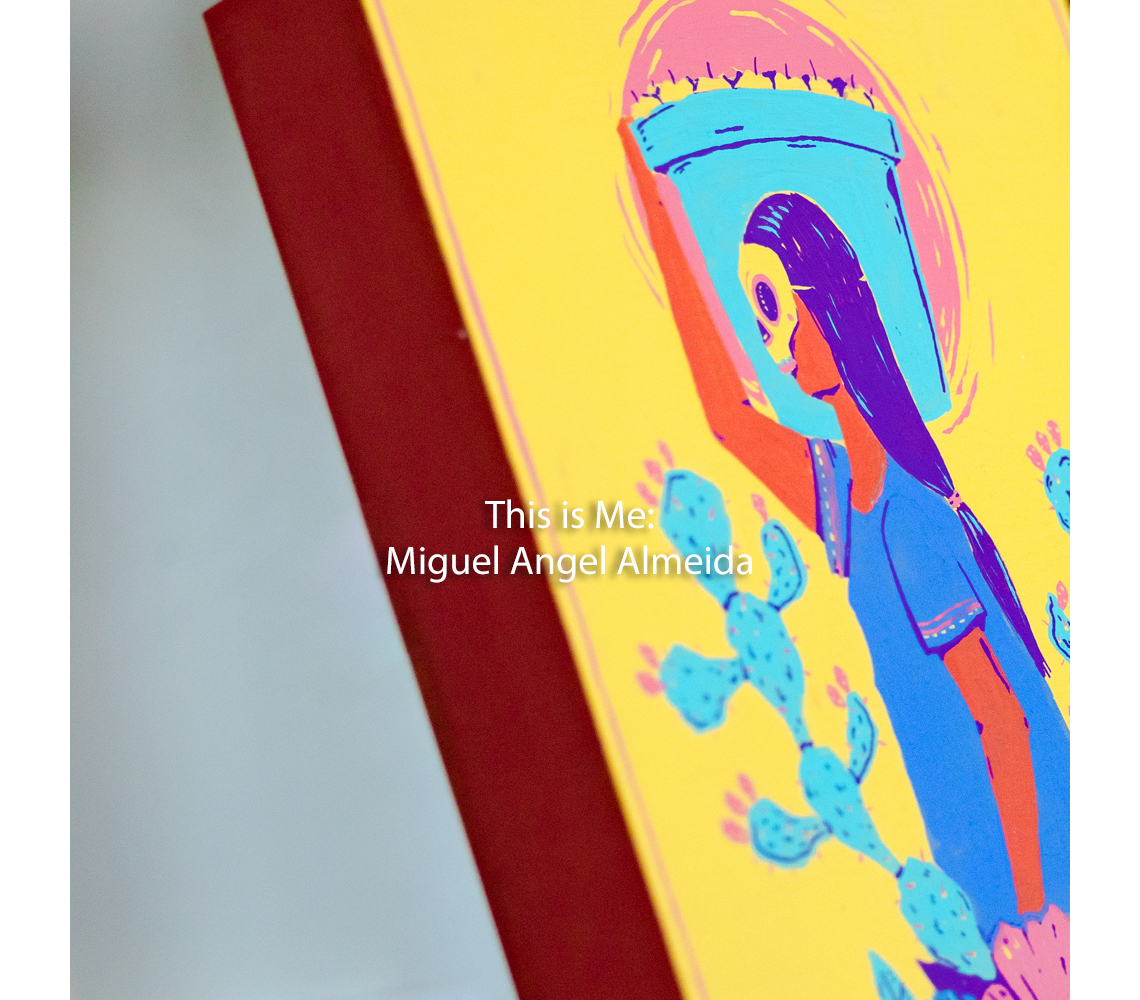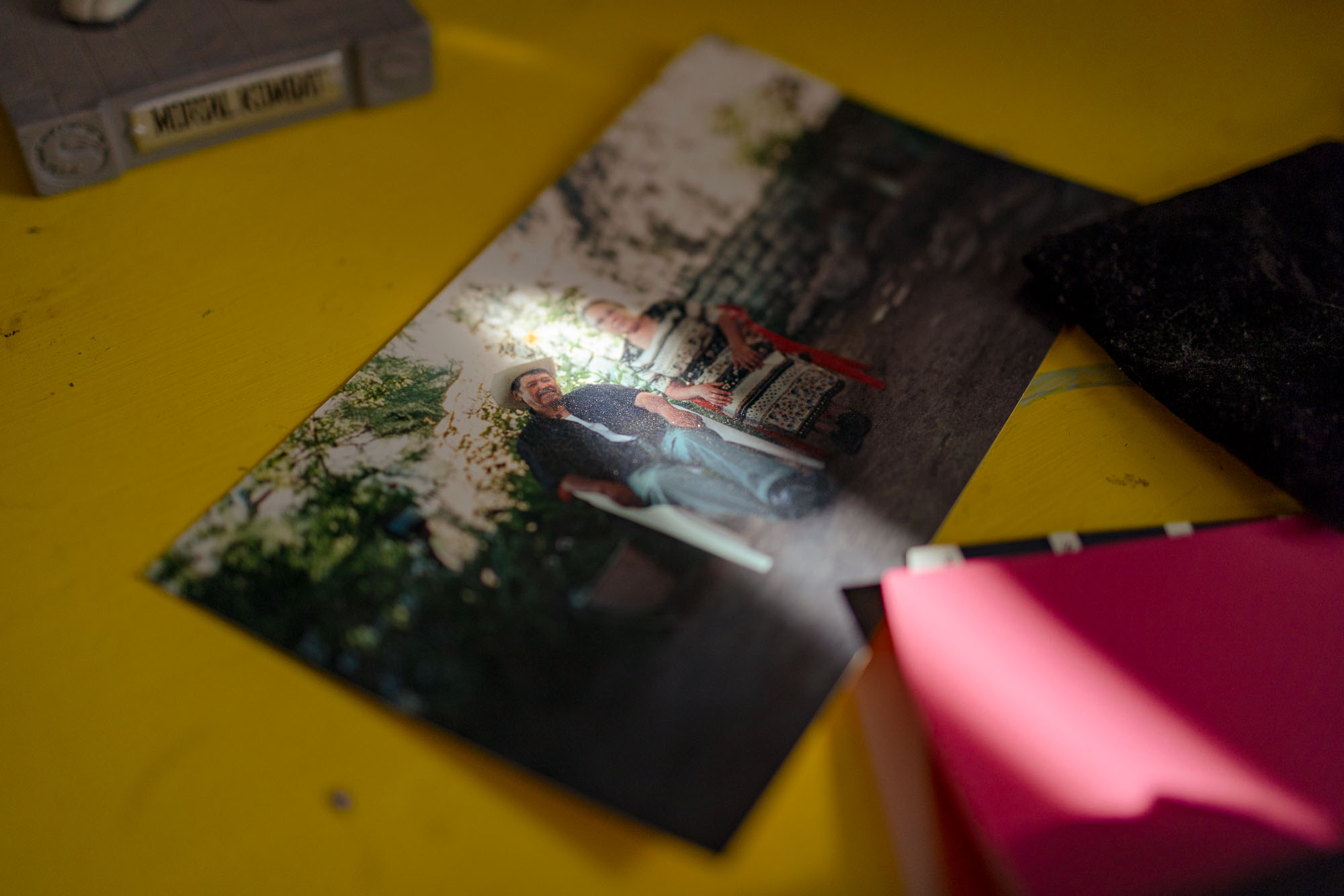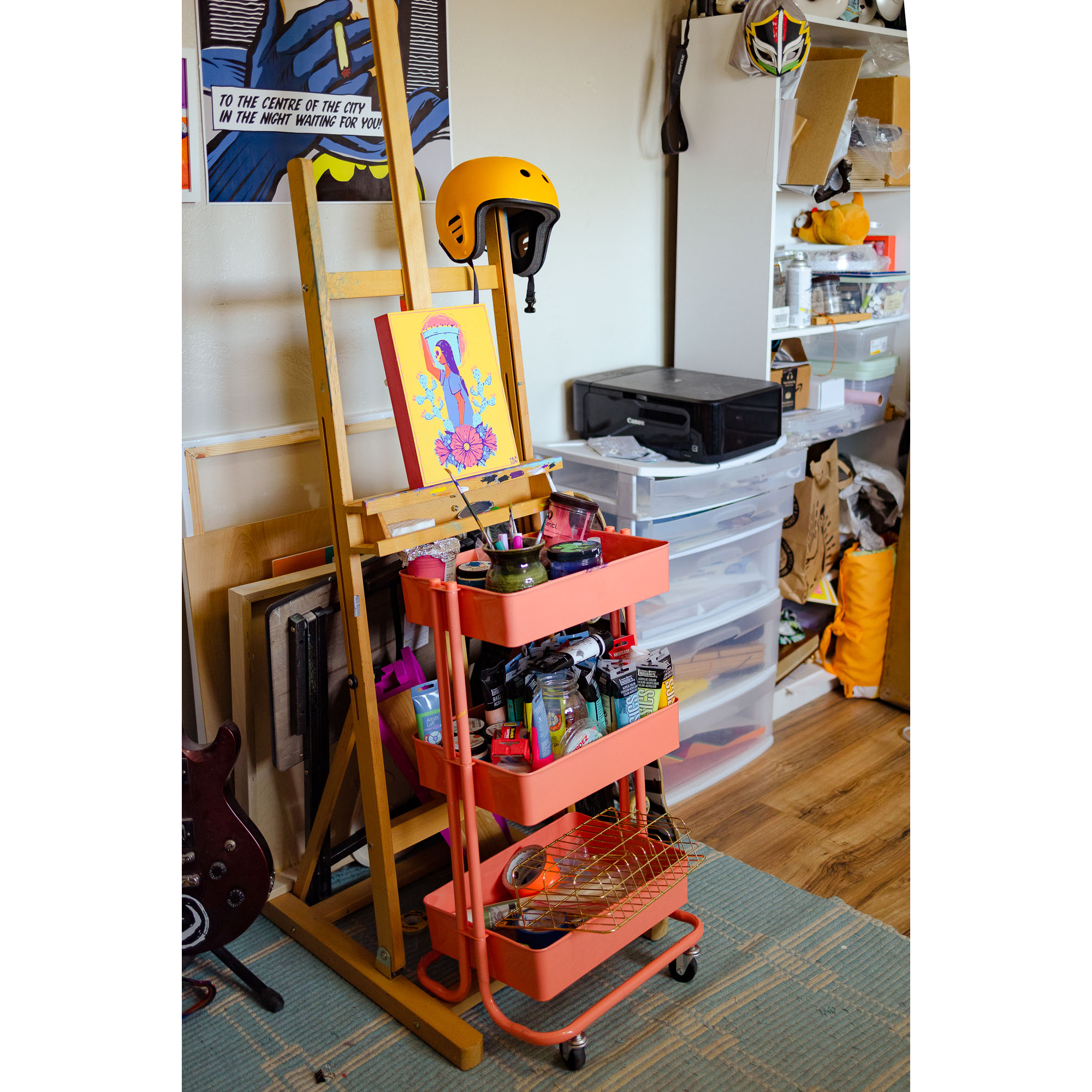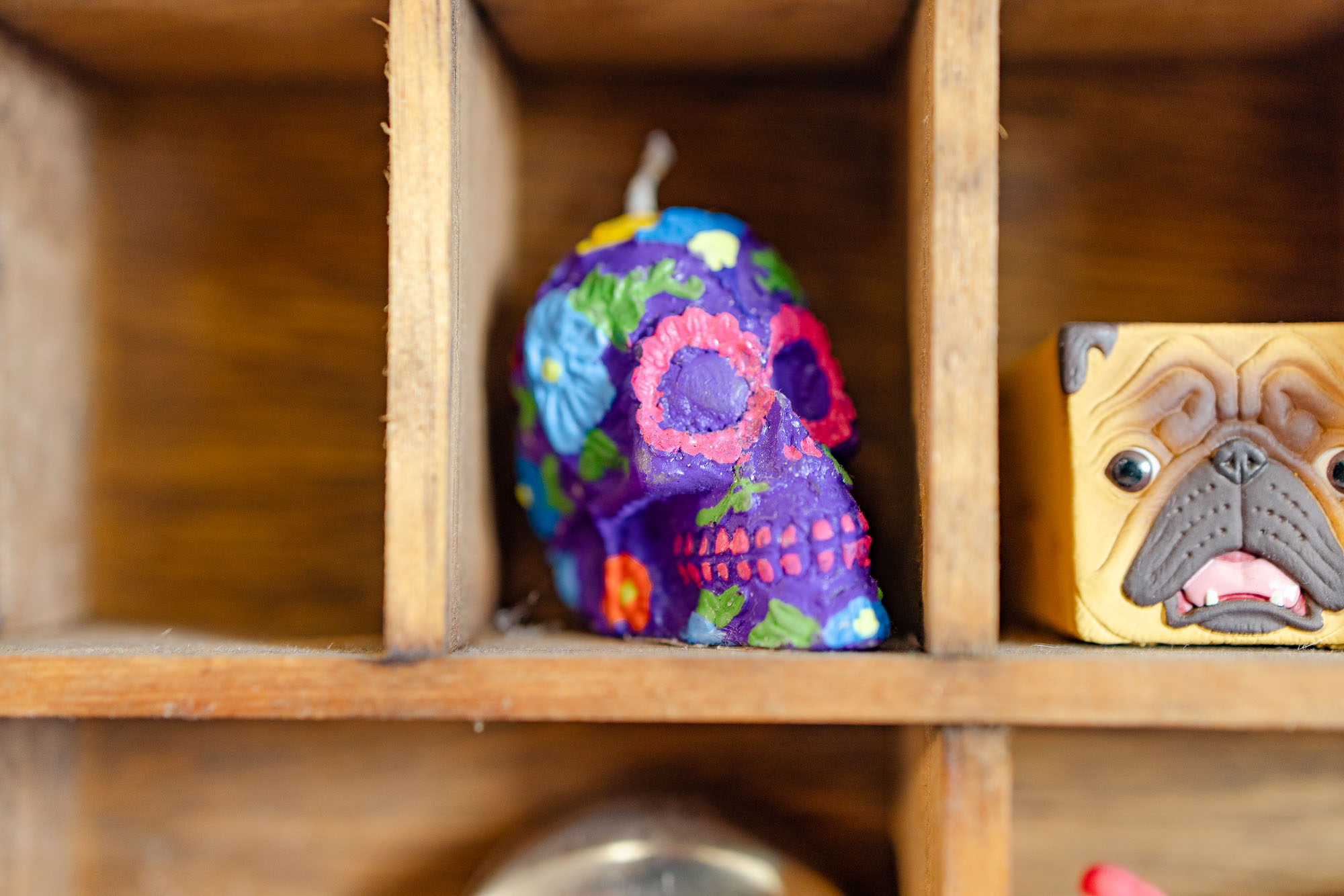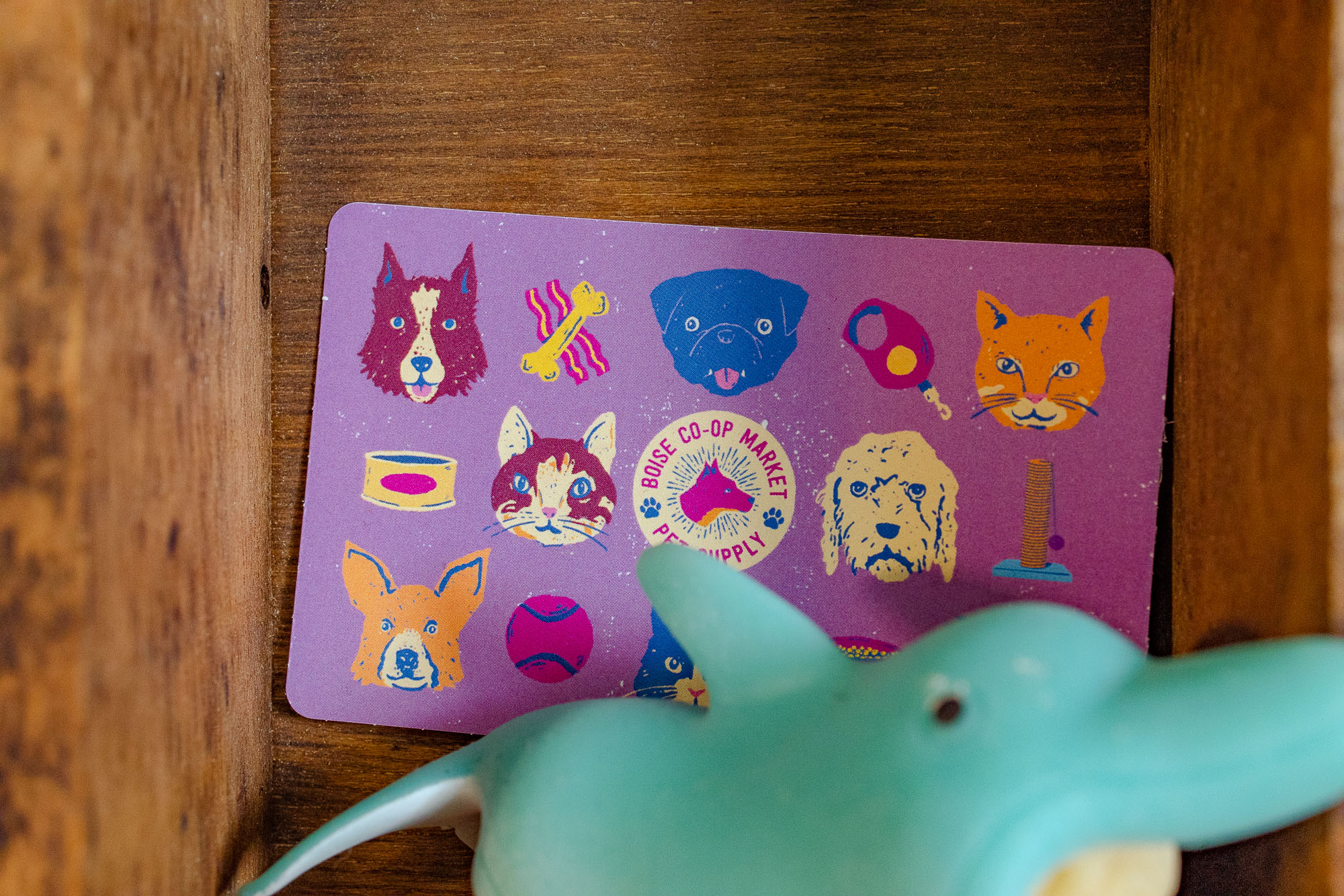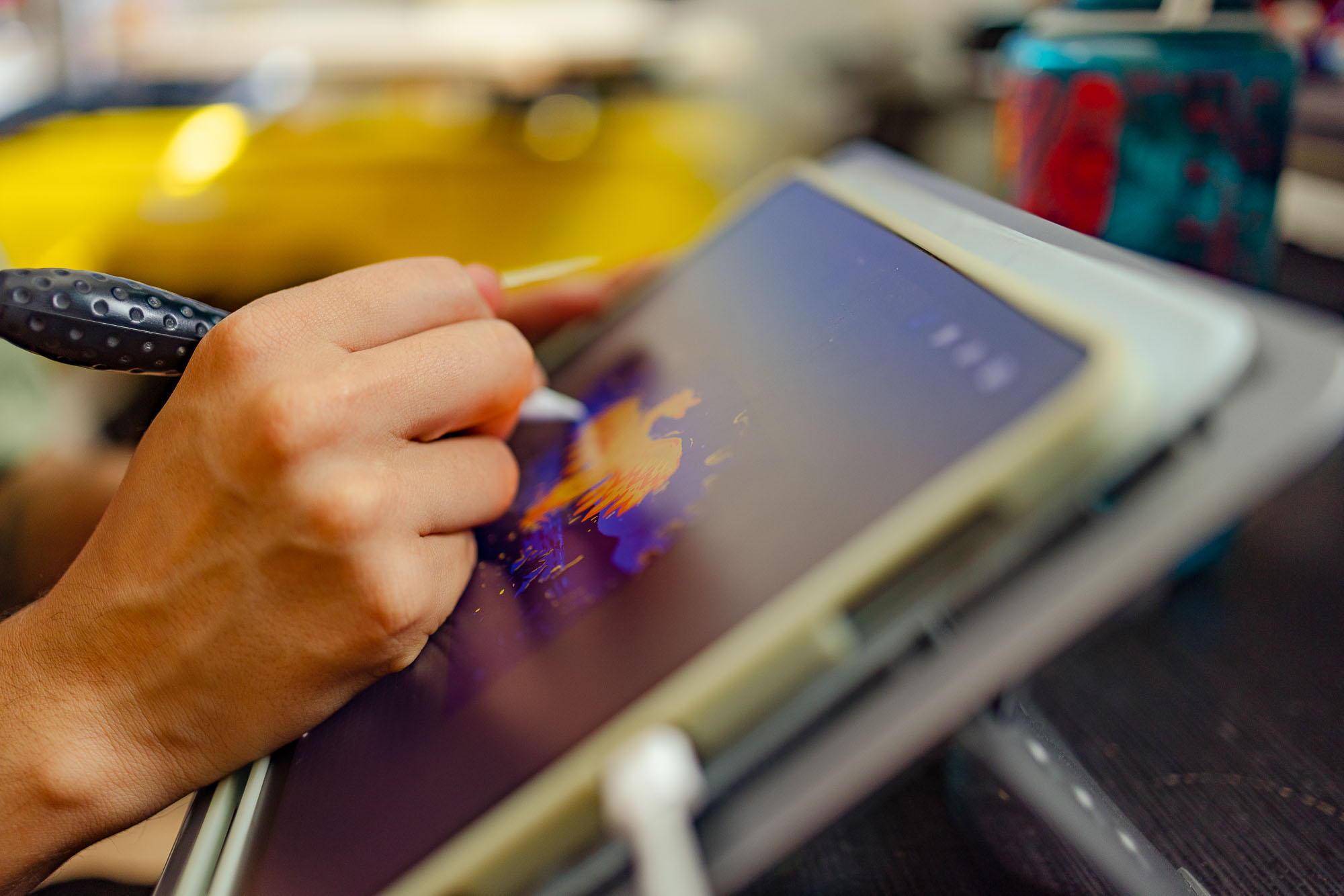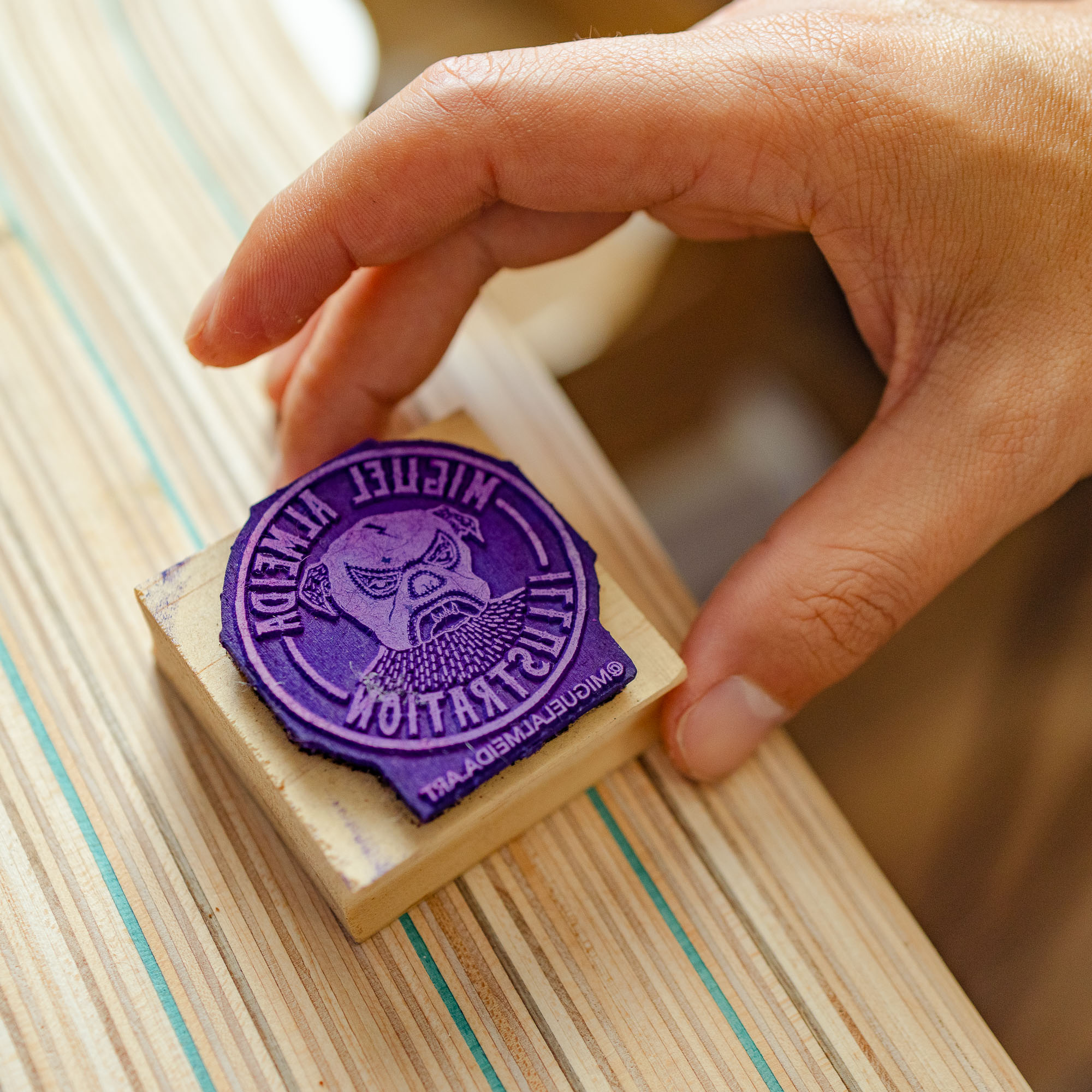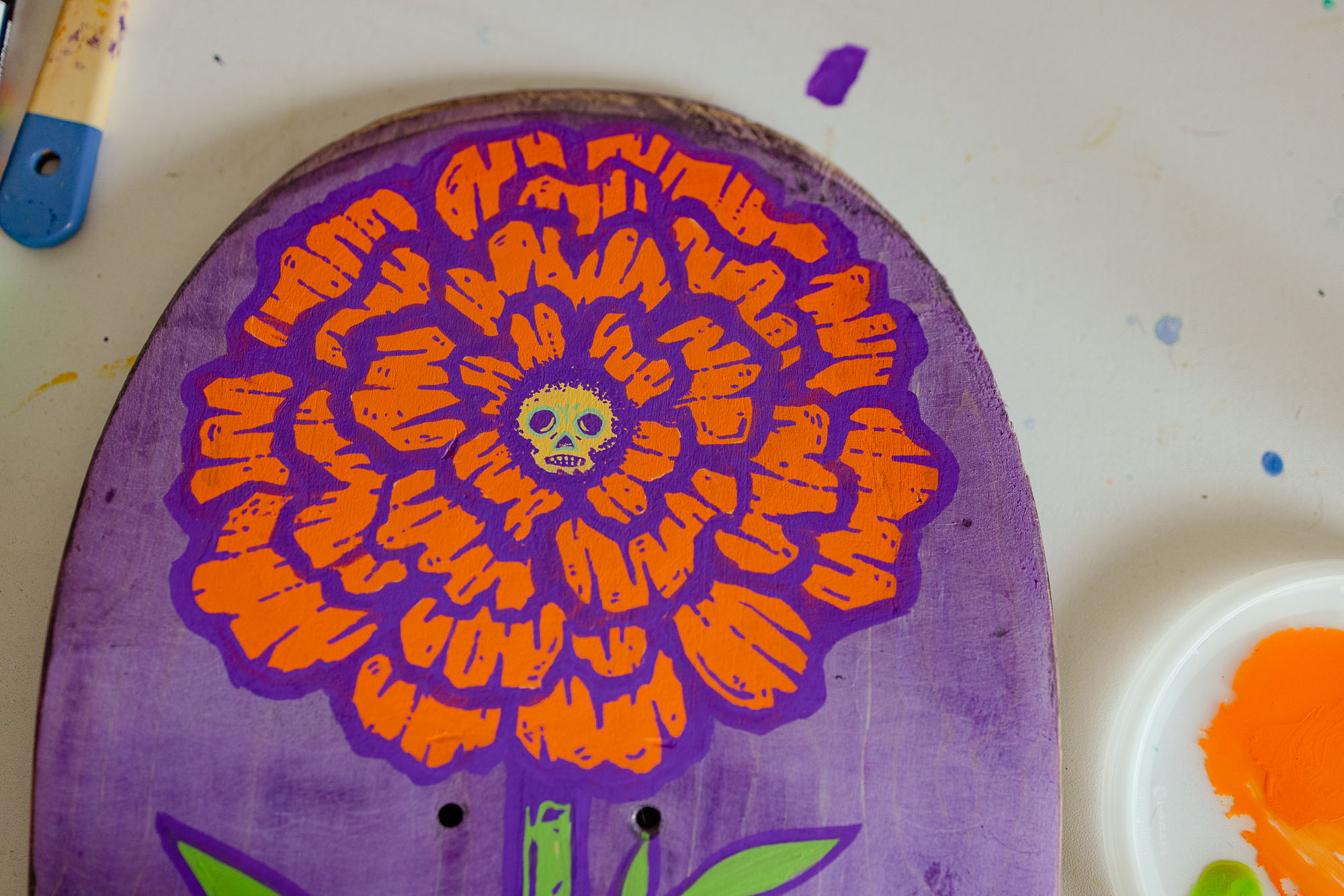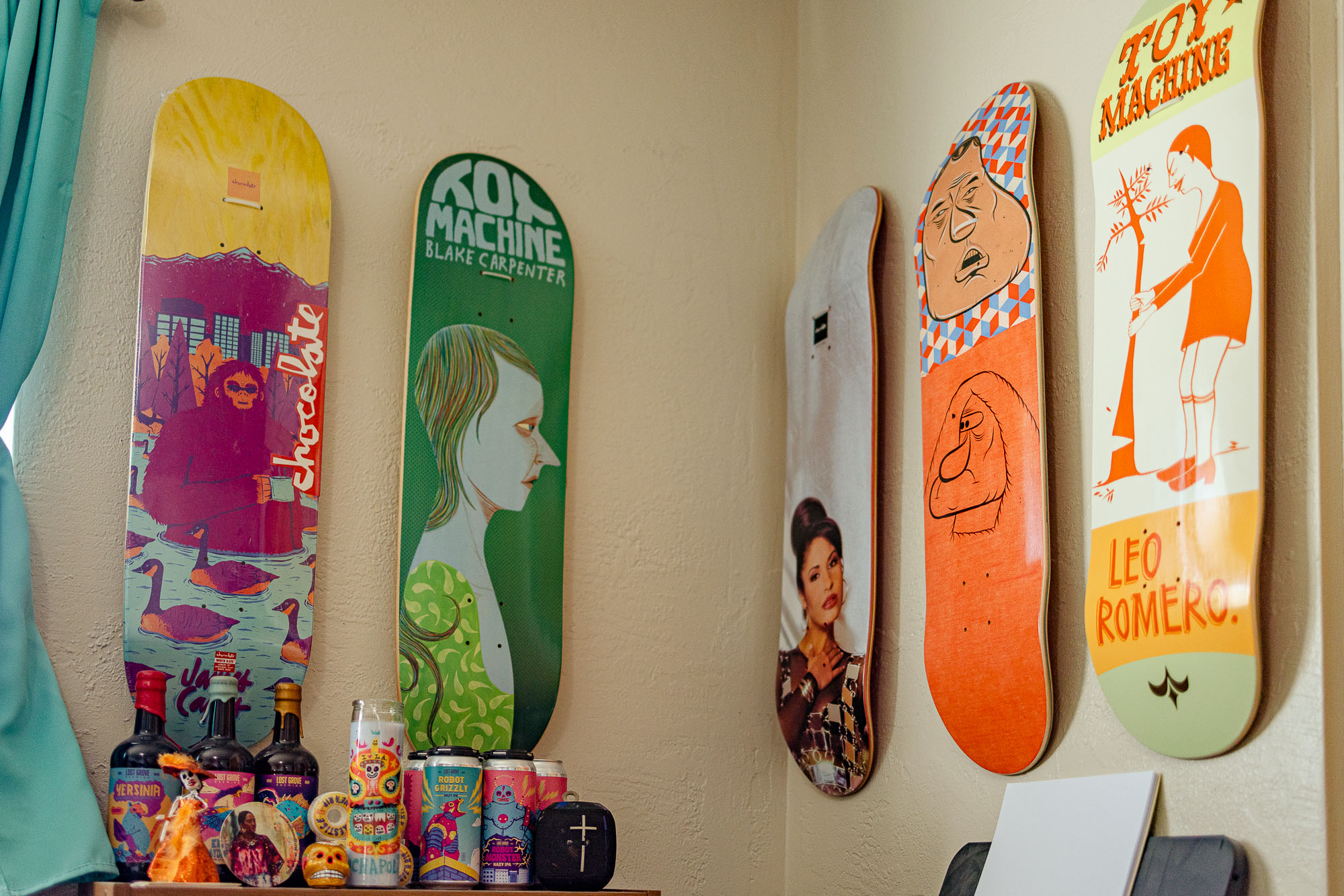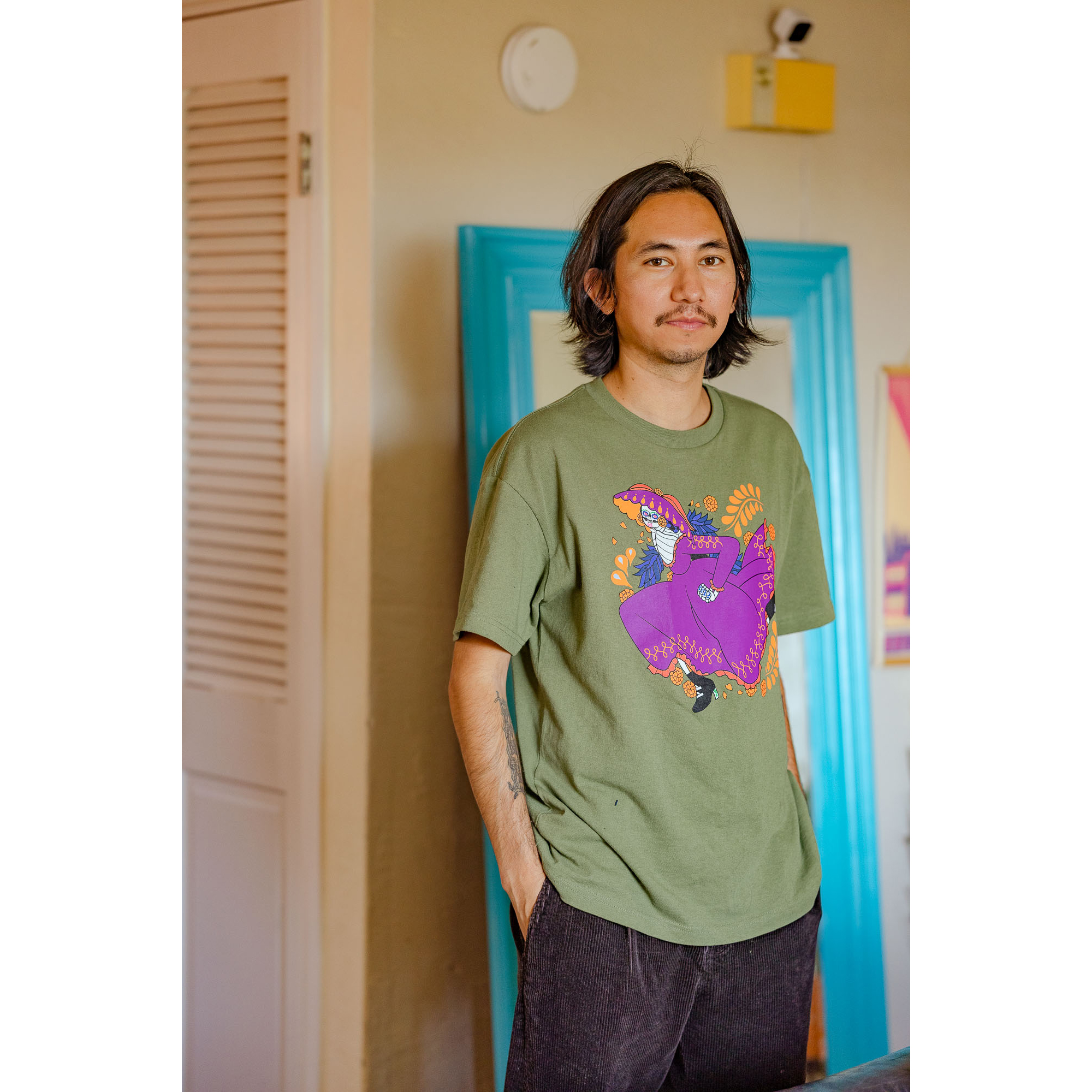Creators, Makers, & Doers: Miguel Angel Almeida
Posted on 1/3/23 by Brooke Burton
Interview & Photography by Brooke Burton © Boise City Department of Arts & History
Miguel Angel Almeida is a Boise based artist and illustrator whose work you’ve seen around town if you’ve gotten a cup of coffee, a beer, groceries, or checked out a book from the library. (His design is one selected for the new library cards!) As a first-generation Mexican-American, he draws inspiration from the culture of his family’s roots, recalling the sights, smells, and folk art from trips back to visit his Abuelito and Abuelita. (Oh the smells from their kitchen!) We dug in to find out his idea of a dream job, his take on a mouse and keyboard (yay or nay?), and the ups and downs of tackling big projects, like his mural for Google. What’s more, Miguel is interested in critical issues faced by farmworkers, such as their lack of fair compensation and safety. It’s a contemporary reality he addresses in his personal work and an answer to “What do I want to say….this is me.” And we are listening.
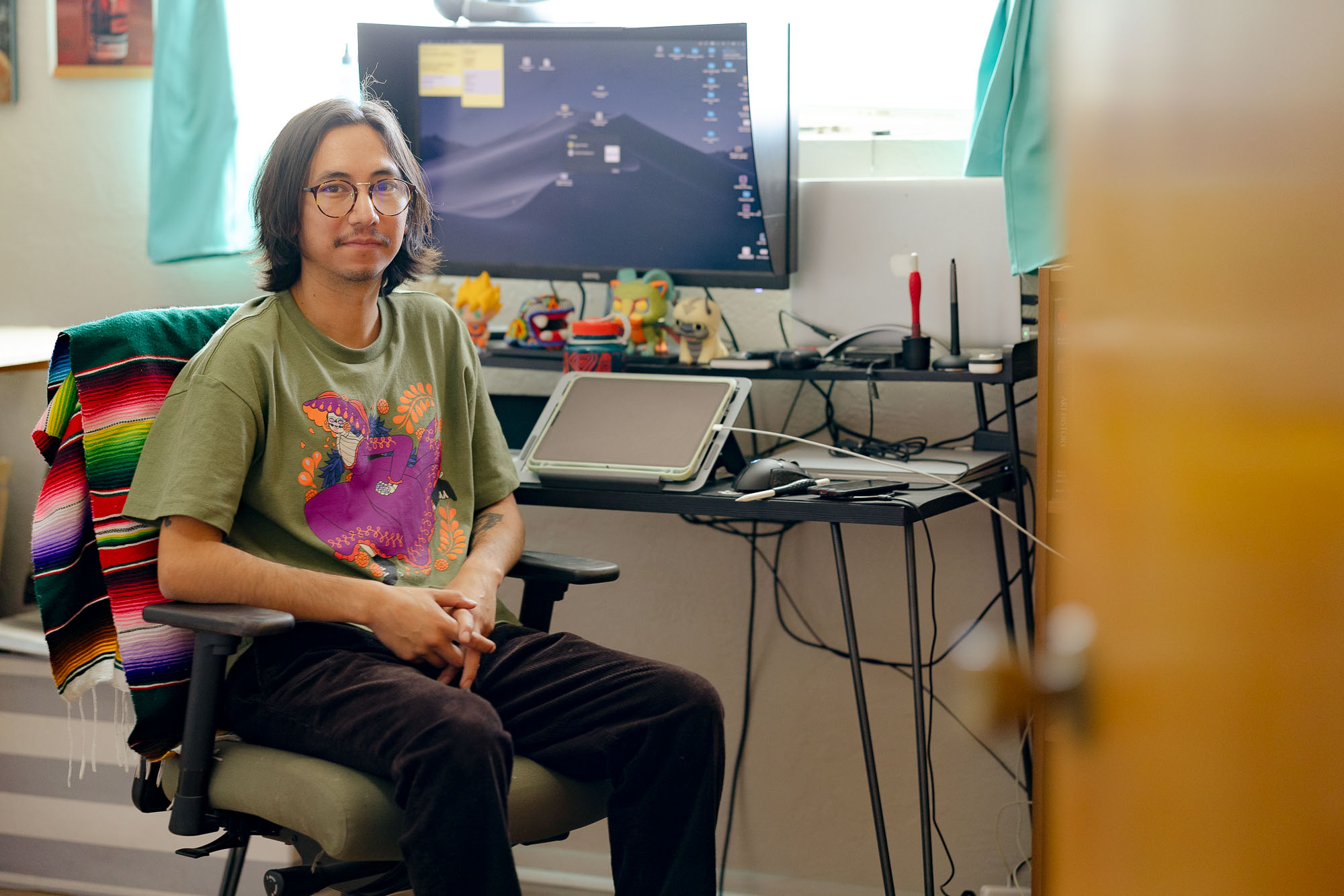 We’ve been talking about growing up first‑generation Mexican‑American.
We’ve been talking about growing up first‑generation Mexican‑American.
We had a big family, there was always a group of five or six cousins close to my age, just hanging out on the weekends. I had my friends in school out in Marsing with the same background; our parents were all farmworkers and we knew both English and Spanish.
In public school, you said you started to notice that not every family, white kids, did not have to translate for their parents, like at parent‑teacher conferences, for instance.
Or going to the doctor with my mom, or, my brothers and I laugh about it now, but whenever my mom would take us through a drive‑through to get food, we would have to yell our order from the passenger side because she was nervous they wouldn’t understand her English. Whereas, my dad, I don’t think he was as insecure about his accent or the way he spoke English.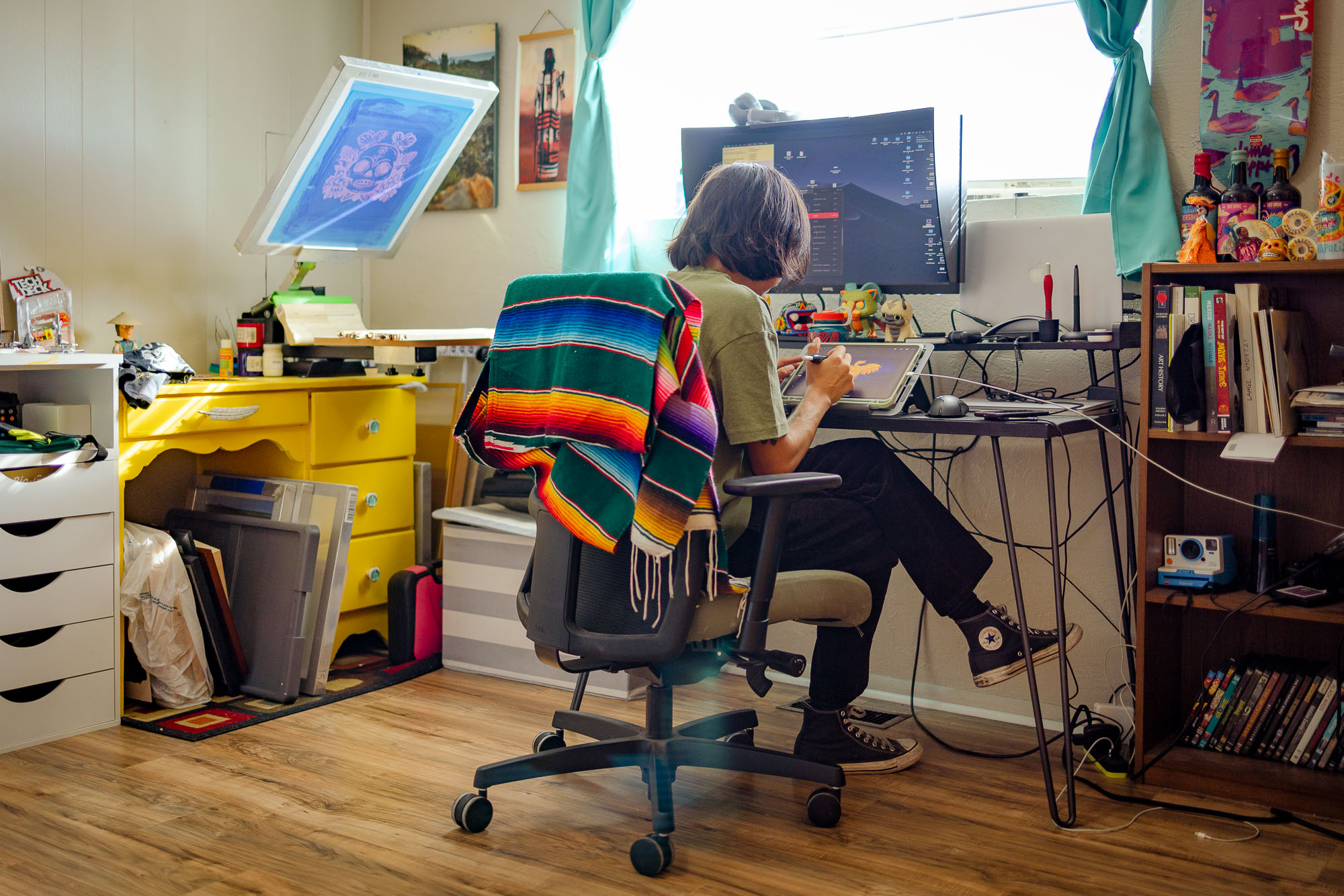
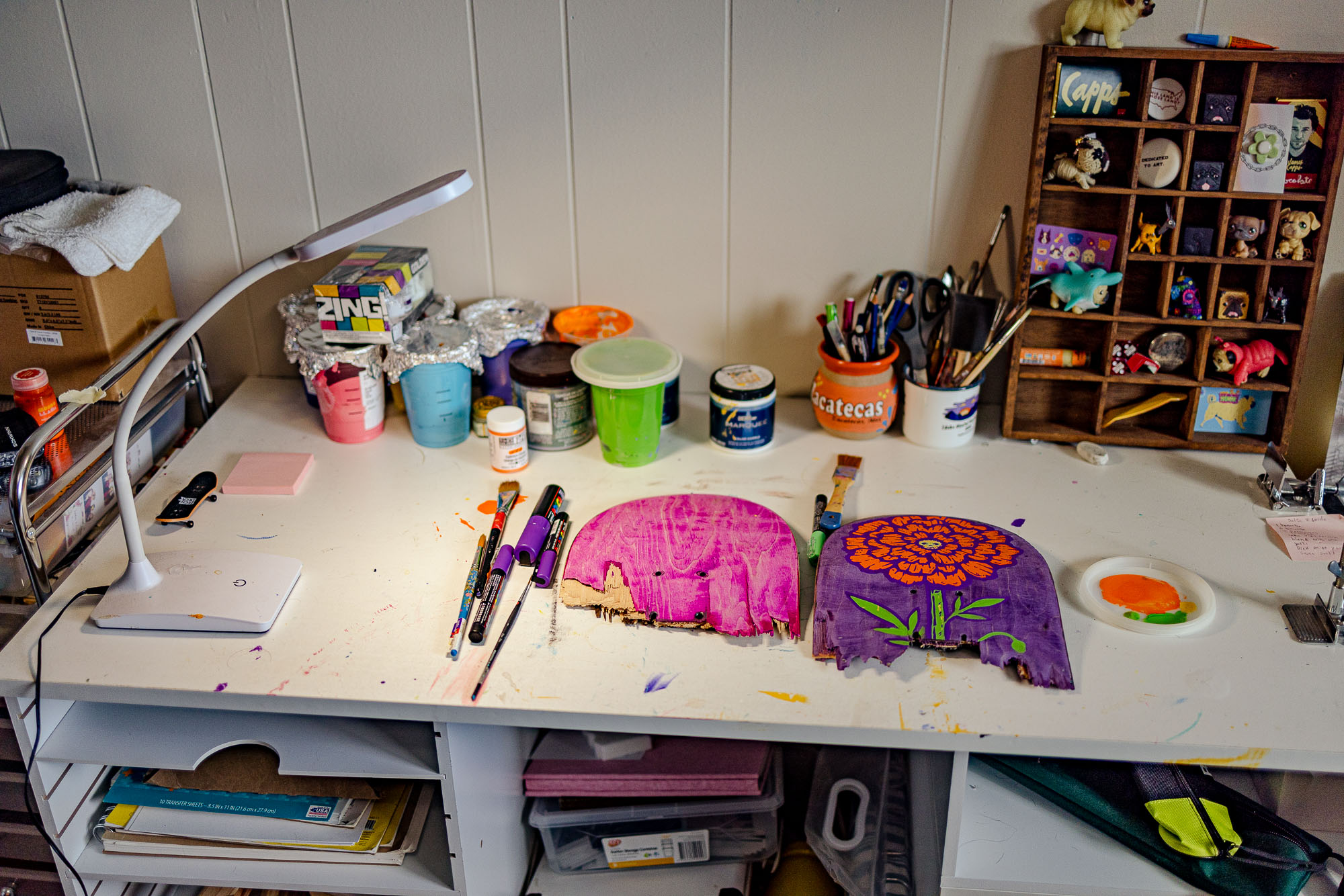
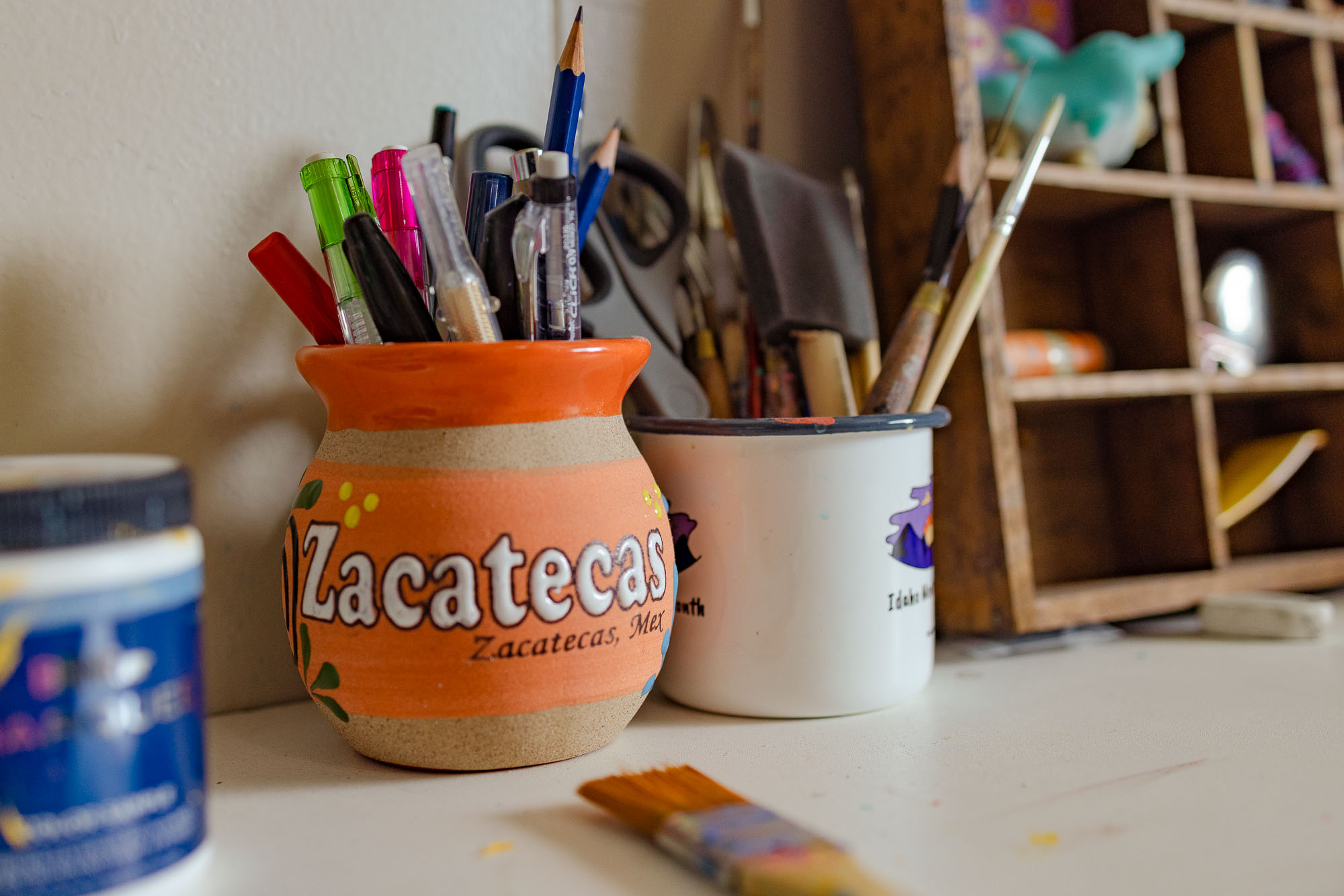 What does it mean to you to be a first-generation American? I know that’s a big question.
What does it mean to you to be a first-generation American? I know that’s a big question.
It’s definitely interesting. Growing up, you feel like you don’t belong here, you’re not American enough for the US, but you’re also not Mexican enough for Mexico. You’re this weird in‑between. I would go back to Mexico to visit family members and it was like, whoa, like, my life is so much different.
The culture?
Especially in Idaho. I have cousins who grew up in Los Angeles, Long Beach, where there’s a big population from Mexico and there’s so much of that culture there, whereas here, in Idaho, it’s a very small percentage. And that makes it harder, it’s easy to get disconnected from the culture.
Did you go back to visit family?
I’ve been going back since I was a newborn baby; my mom would take us. But one of the first times I kind of realized [a difference] was seeing kids in the streets cleaning car windows, for money.
Did that surprise you?
It was one of the first times I recognized my privilege growing up in the US versus Mexico. We were driving down to Zacatecas, I remember seeing a bunch of kids my age, five to eight, running to all the cars, cleaning windshields and asking for money afterwards. It was weird to make that connection, at that young of an age. But it’s something I remember to this day, like, whoa, I’m growing up much differently.
Did you ask your parents why the kids were washing windows?
I’m sure I did, my parents probably said because they don’t have money to eat. A lot of the small towns in Mexico, the Pueblos are very poor. My parents grew up very poor and that’s why people have to leave those areas because there’s not a way to survive or to make a living.
For people to sustain themselves.
That’s why I think there’s probably more people leaving than staying, whether coming to the US or going to a bigger city to make money.
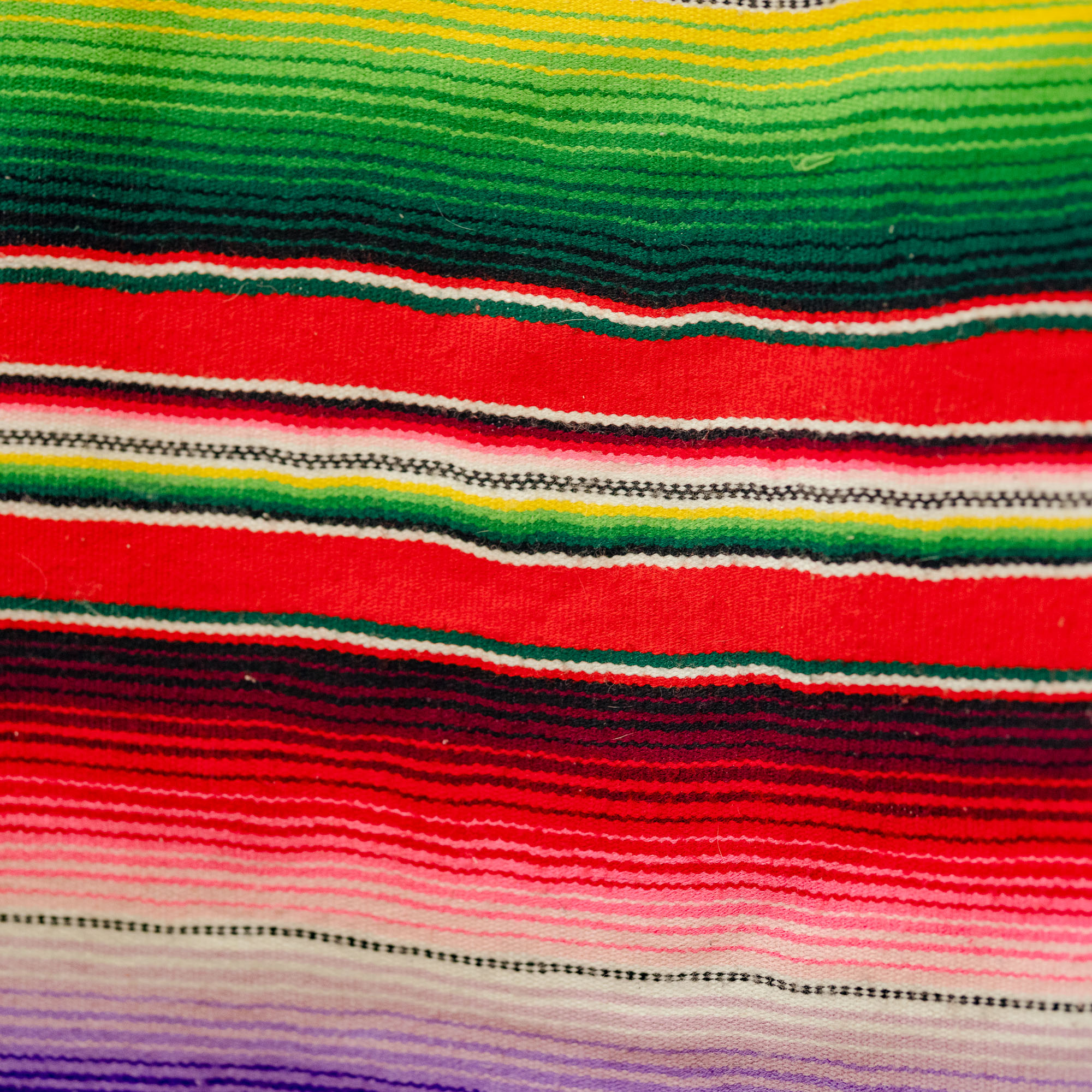 What is a favorite memory from those trips?
What is a favorite memory from those trips?
It’s hard to pick one but whenever I think about my Abuelito Polino and Abuelita Concha’s home in Zacatecas, the first thing that comes to mind is always the smells of the kitchen and their farm. It is a one-of-a-kind smell that instantly brings back so many memories. Whenever I think of that smell I’m reminded of all the times waking up and going straight to the kitchen to my Abuelita Concha prepping breakfast. Then riding my Abuelito Polino’s horses. We loved being in the corral with my Abuelito and seeing his horses, donkeys, pigs, cows.
That sounds amazing! When I came in, I immediately commented about how colorful your work is; it’s very bright and vibrant.
That’s Mexican culture. The further south you go, the more vibrant the culture; the supermarkets are painted pink or yellow. Some cities are more modern or have more Spanish influence; the capital of Zacatecas looks like European architecture. But the smaller towns tend to be more colorful. That’s the inspiration behind my color palette. Color is a big part of the culture; clothing, pastries, ceramics, pretty much everything.
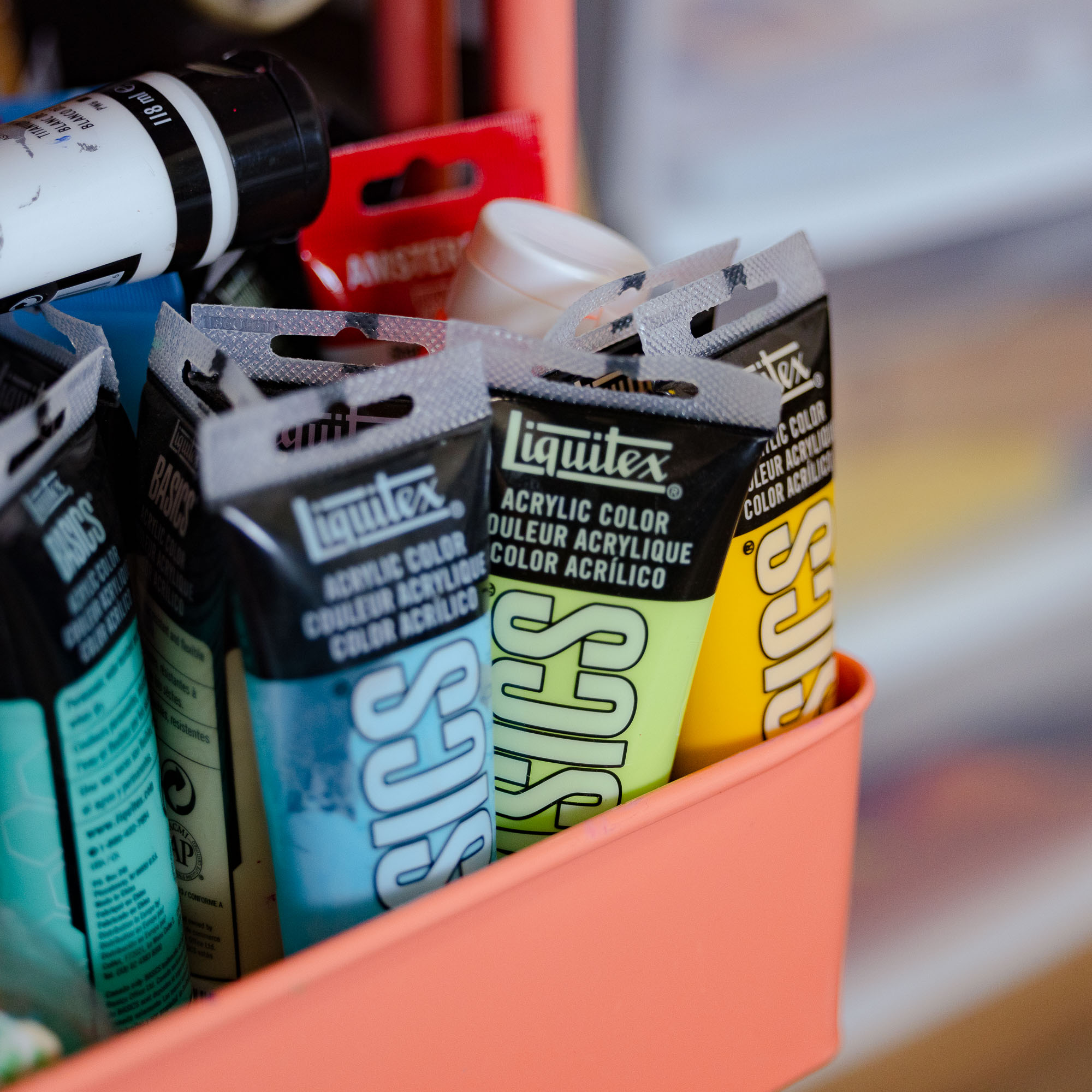 Tell me about the references to Day of the Dead.
Tell me about the references to Day of the Dead.
I feel like we’re a culture that celebrates the dead a lot. It’s something that’s very talked about, common. Día de los Muertos is dedicated to remembering the dead. It’s a holiday that the dead can come visit you; you put up their photos, cook their favorite foods. There are different levels, different symbols, from the flowers, to the papel picado, to the water. Essentially, it’s guiding the dead back to visit you. In American culture, I don’t even know if we have a day to celebrate the dead, Memorial Day or—
Similar, but definitely different.
When I was little, I saw the calavera masks made by artists in Mexico, I saw how they were decorated and how colorful they were. I feel like it’s an experience a lot of first‑generation Mexican‑Americans, like me, can relate to. I usually like to use a mask in place of a character so the viewer doesn’t [question] if the character is my grandparent or something.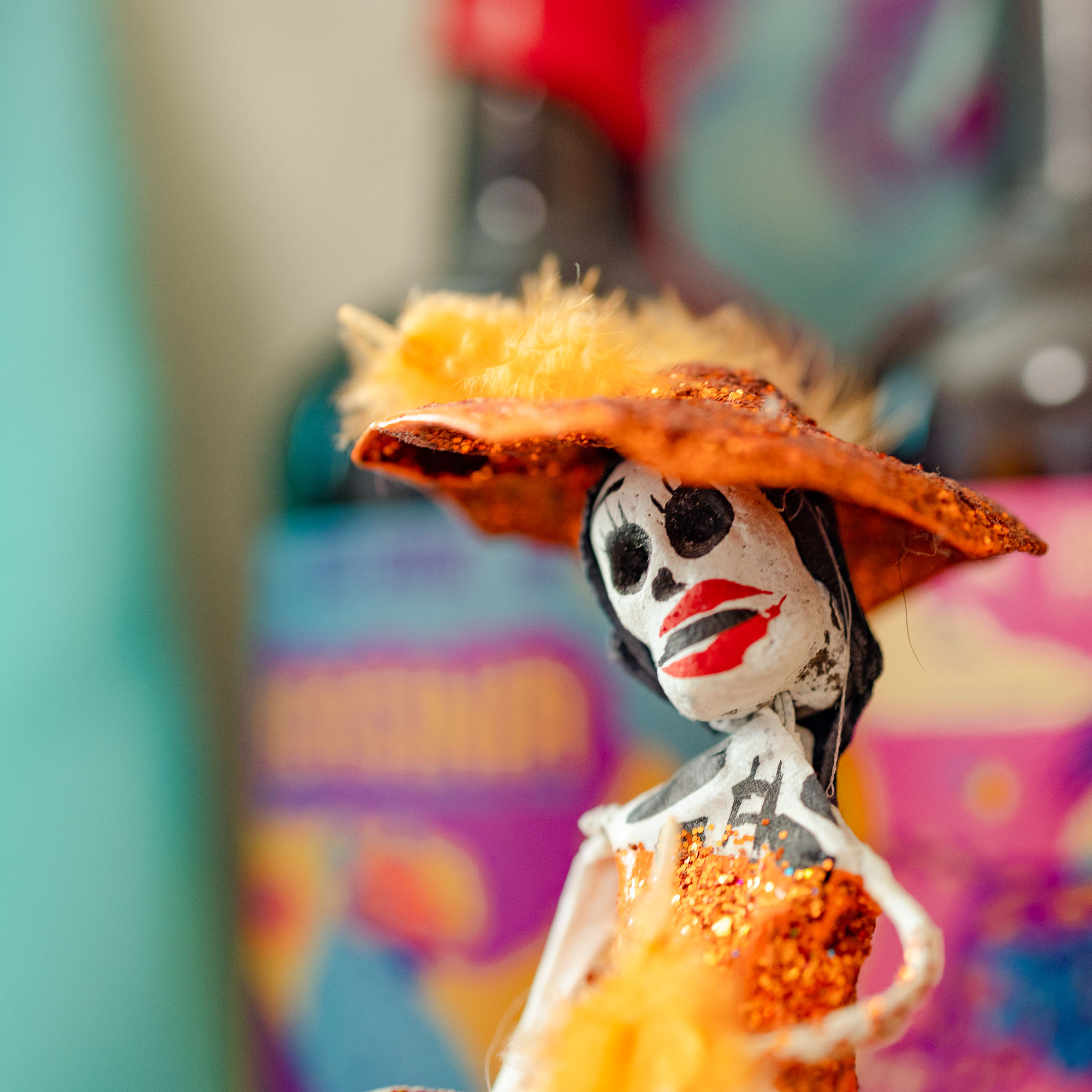
A mask instead of a face so it’s not specific?
In doing so, maybe they can see it as their story as well. Another reason for the mask is to include people from the past or those who are deceased, such as generations of farmworkers. Both my grandpas used to come to the US for farmwork, that’s how they survived. Some of my personal work shows the kind of exploitation farmworkers here in the US experience, especially those who are undocumented.
How do you describe your personal work versus commercial work?
Whenever I’m doing commercial work, I feel it’s still very much me. It reflects my identity. In my personal work, I try to tackle issues I see in the world.
So, this piece?
I created this image of a farmworker carrying a bucket of produce with sunflowers and cactus. I just had this idea in my head. My parents’ first jobs were farmworking, my dad’s older siblings were farmworkers. Some of my closest friends grew up in farmworking. A majority of people working on the farms in the Pacific Northwest—Idaho, California—are undocumented workers. It’s been going on for a long time, and there have been movements to get them more rights. You know, these are humans; without them we wouldn’t eat. It’s this exploitation that’s been going on, they get taken advantage of for something we all benefit from. 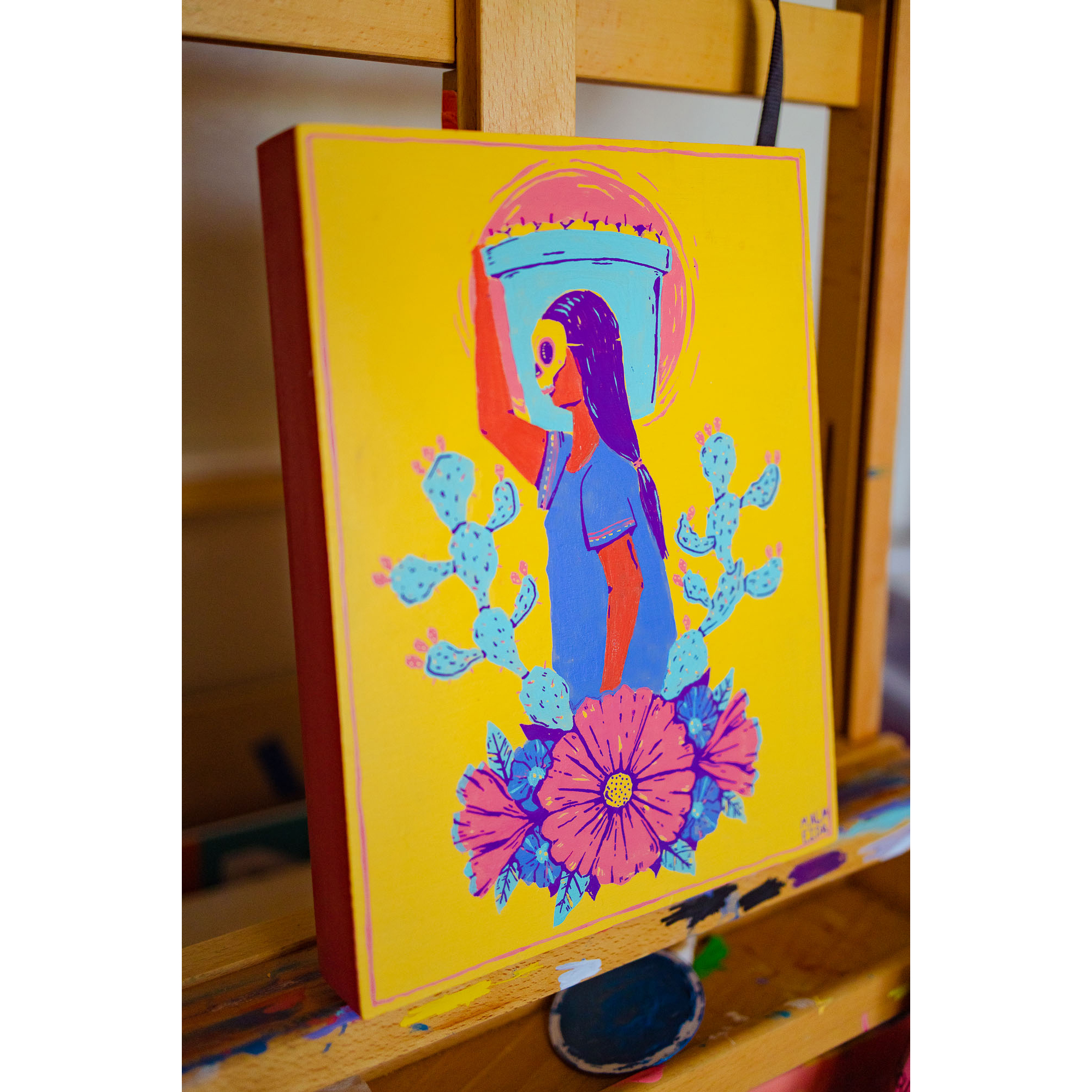
Taken advantage of in terms of money?
Yes and labor. Being undocumented, they don’t have workers rights, they don’t get paid overtime.
Or have benefits, unions.
The biggest challenge is that it’s really hard work. These people are working in 100‑degree weather, fully covered. They’re working through the smoke, through all of it, and they’re not getting paid very much.
Regardless of air quality or weather.
It’s not hourly; a lot of them are paid by the pound. Every year, farm workers die from heat stroke because they’re out there working even though they shouldn’t be because it’s 110 degrees. They have to cover themselves to protect their skin from the sun.
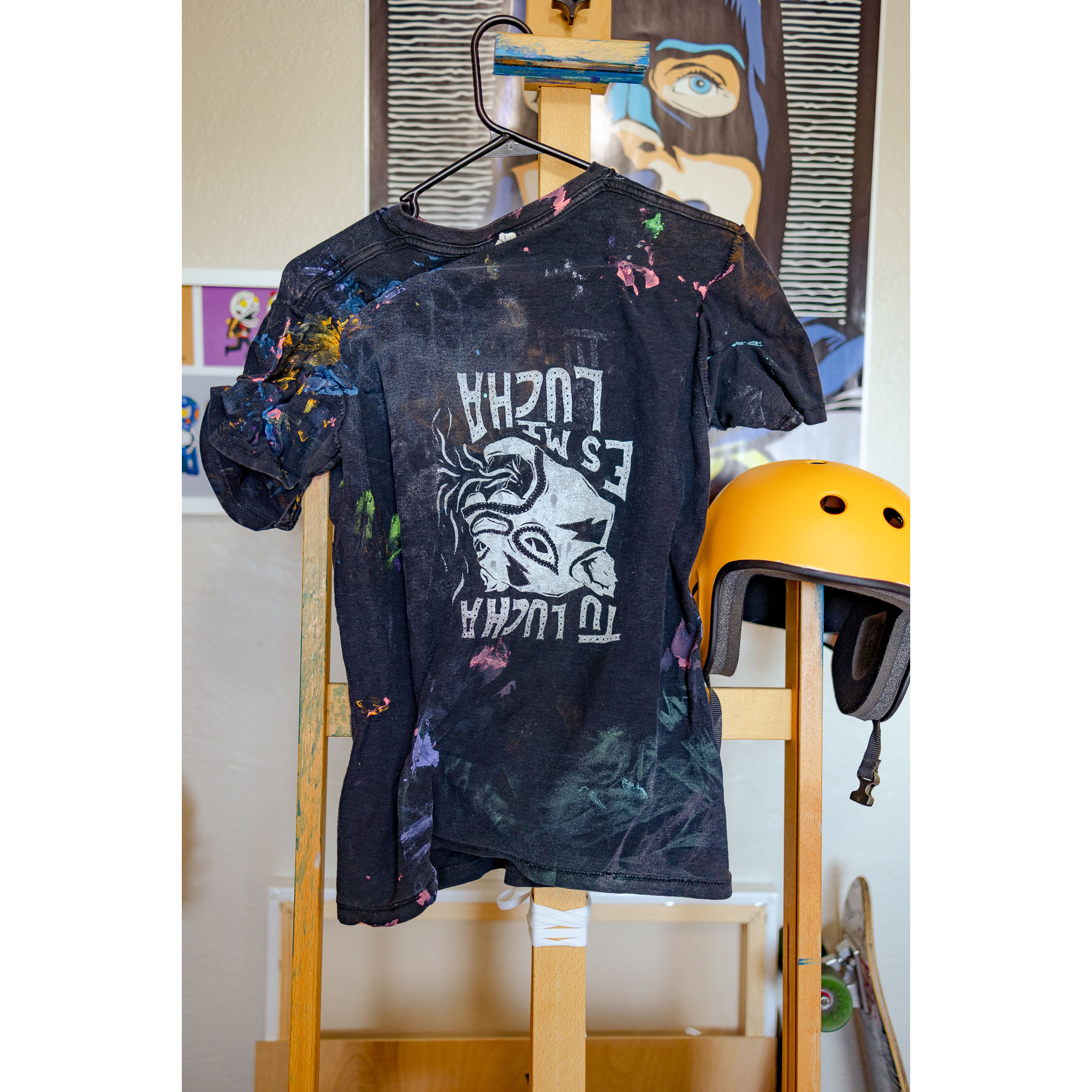 The conditions are poor.
The conditions are poor.
And in my personal work—what do I want to say here, you know, nobody’s paying me to do this, this is me.
Where would I see your commercial work?
I’ve designed beer labels for Lost Grove. I’ve done some work with Push & Pour, the Idaho State Museum as well. I’ve done some murals around town, two in Garden City, one at the Tully skatepark in Meridian, and I’m currently working on one at the Boise Co‑op.
Exciting! I also heard you did a pretty cool project out of state?
I was hired to work with Google to do a mural at one of their new buildings in Kirkland. I was only there for one week. I flew out, rented a car, drove to the Home Depot, got all my supplies and hoped I’d gotten everything I needed. It was kind of nerve‑wracking at first, but I think anything you’re doing that’s new is a little nerve‑wracking.
How might you go about getting more large clients like that?
Connections with other artists. People you meet might be recommending you for a job, you never know.
How did you find your path in the arts?
I’ve always wanted to do something creative. I struggled to go towards what I actually wanted to do, with my parents working really hard, you kind of want to get a job that’s more practical. Being an artist is very risky, there’s no guarantee. When I graduated high school, I thought maybe I could work in animation, and do what I do now, on the side for fun.
Illustration?
Illustration. I saw that the University of Idaho had a program for animation, 3D modeling, digital illustration as part of their art and architectural programs. It seemed like a good fit; I could get a job with a guaranteed paycheck and still draw and paint on the side. I did enjoy what I learned; I was fascinated by 3D modeling, but I got burned out and realized I just wanted to do more 2D work, more fine arts. 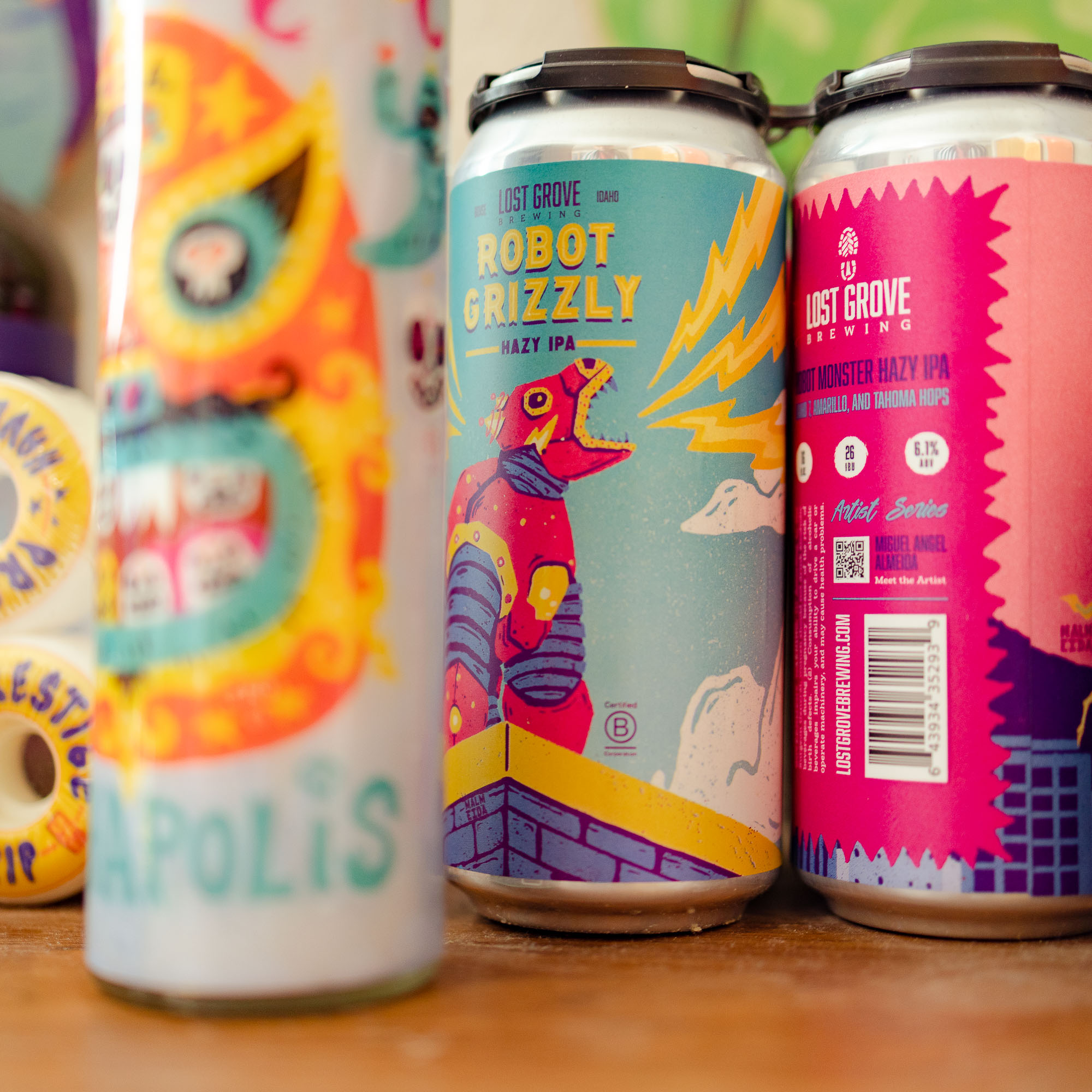
You’re independent, correct?
I work part‑time for the Co‑op, doing digital illustration. But I was doing 3D animation modeling, a lot of mouse and keyboard work when what I really missed was just drawing.
The craft. In what way has technology changed the illustration process?
It’s definitely helped; it’s very quick and efficient to produce something on my iPad that’s meant to be printed digitally. When I’m working on a mural or a painting, I will start on my iPad and go from there to execute it. If I get stuck at a certain point on a mural, I’ll usually take a photo of it then go back on my iPad. More than anything, it’s helped me save time.
We forgot to mention your Boise Public Library card design!
Yeah! I don’t know how long they’re available. I saw the art call, applied. It was an exciting project! I like creating art that can resonate with both children and adults.
I think your design is a testament to that. Out of all the social media platforms, which do you like?
Instagram. I rarely get on Facebook anymore. I have a TikTok, but I don’t use it much. Honestly, managing just one social media account is another job in itself. 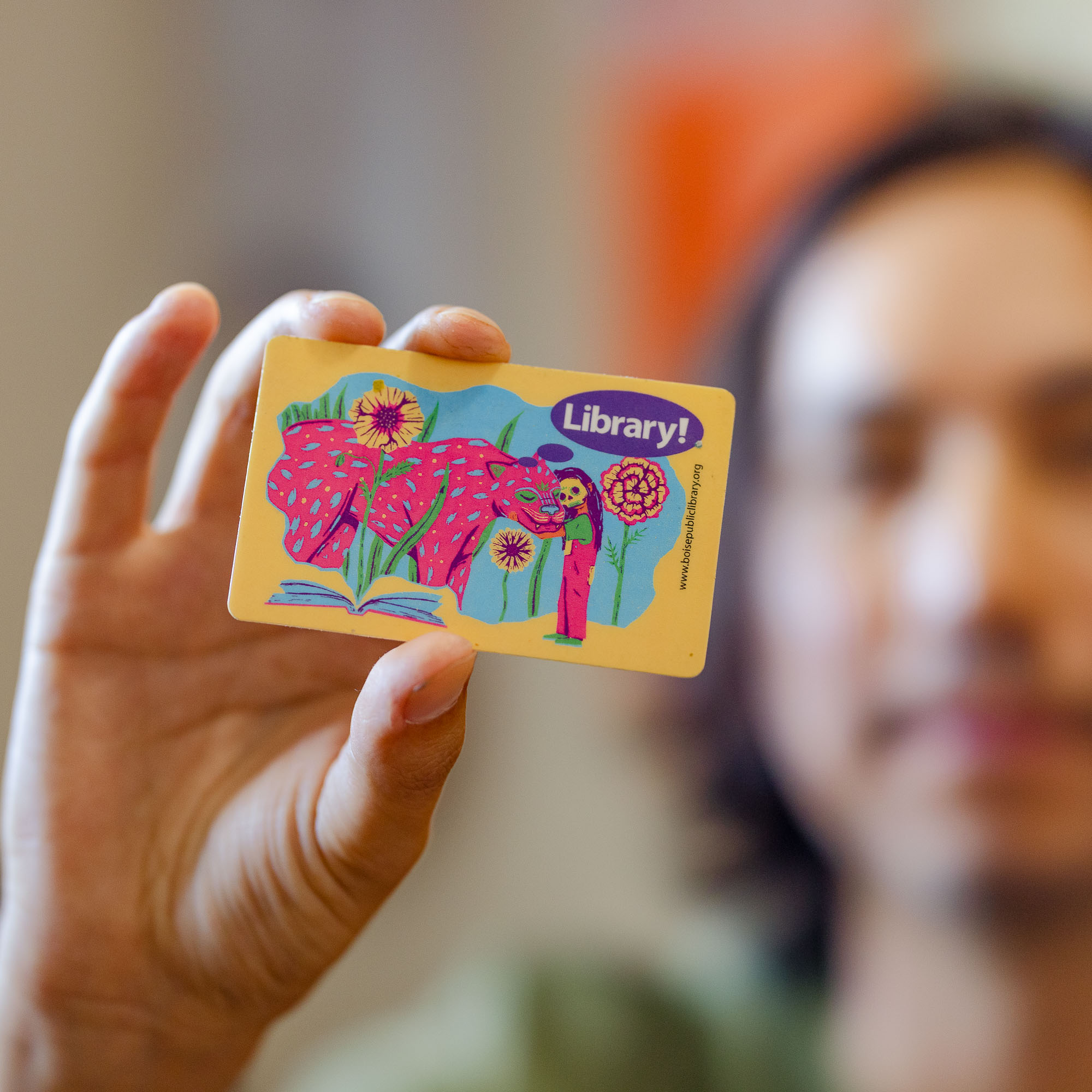
Do you get referrals from social media?
For sure. Social media serves like a portfolio now; people can see all your work there. Why take the extra step to click on your website to look at your portfolio? I could be wrong, but—
What advice would you give yourself?
I think I would go back to high school and say, just do it, just study and go for what you want. I would have told myself to go for it sooner.
It’s hard being an independent artist.
And especially coming from a family—none of my aunts or uncles or my parents owned their own business.
You’re an entrepreneur! What are your strengths?
My wife always says that I don’t let things bog me down. If something happens, I don’t dwindle on it, it’s not in my control. Sitting here being upset isn’t going to fix the situation, it’s only going to affect my mood, my health. That’s not always applicable; there are times when things get to you, and you’re like, why am I letting this get to me? But I feel the older I’ve gotten, the more—I have a choice, you know, the choice of whether to let it affect me.
What’s a weakness?
Sometimes I am afraid to try things. I overthink
Like an opportunity?
Doing my first large‑scale mural, I definitely over-thought it. Once I had said yes to a 12‑foot‑by‑15‑foot wall, I was like, I’ve never done anything bigger than 4 feet. So then you’re just spiraling. I need to be as prepared as I can, because in this case it is in my hands.
That’s the fear of failure.
That’s one thing I’m trying to work on, trusting my process.
Say yes. Just advice from me to you: say yes.
That’s really just it, saying yes to opportunity.
Which artists do you look to for inspiration?
Margaret Kilgallen, she’s no longer alive; she designed that skateboard. I’ve always been a big fan of how simple and graphic her work is. Jorge Gutierrez, the artist behind Maya and the Three on Netflix. He also created the story for The Book of Life animated movie.
Would you ever like to collaborate with a filmmaker?
I think so. In animation, the one part I did fall in love with is visual development. That’s what I actually wanted to do out of high school. I didn’t realize that the people animating characters aren’t always the ones designing them, that’s the visual development team. Their job is to design the characters, the environments, the lighting. Then the people working in 3D use their problem‑solving to bring it all to life. That’s the aspect I missed, drawing from my imagination.
What is your perfect job?
Perfect job?
Your dream job?
It’s hard to say, because I know at some point in the past, what I’m doing right now was my dream.
West End Boise
January 3, 2023
This interview has been edited and condensed for clarity.
Creators, Makers, & Doers highlights the lives and work of Boise artists and creative individuals. Selected profiles focus on individuals whose work has been supported by the Boise City Dept. of Arts & History. The views expressed in this publication are those of the individuals interviewed.
